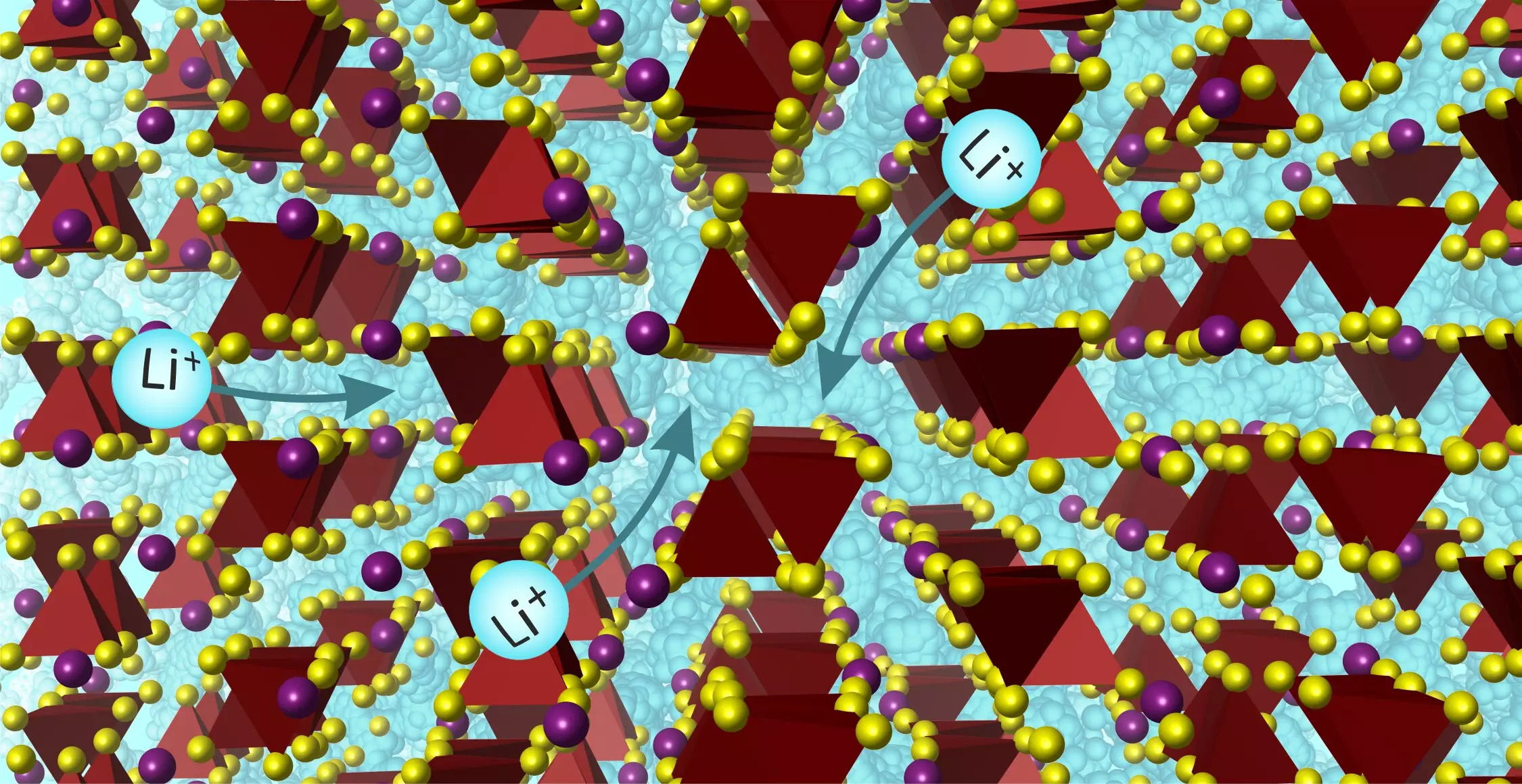Materials science faces a pivotal challenge in creating innovative materials that address pressing global priorities such as achieving Net Zero. As a breakthrough in this field, researchers at the University of Liverpool have recently published a paper titled “Superionic lithium transport via multiple coordination environments defined by two anion packing” in the esteemed journal Science. Their groundbreaking research unveils a solid material with remarkably fast lithium ion conductivity. In the realm of rechargeable batteries that power electric vehicles and electronic devices, lithium electrolytes play a vital role. With the use of non-toxic, abundant elements, this novel material possesses sufficiently high Li ion conductivity to potentially replace liquid electrolytes in current lithium-ion battery technology, thus improving safety and energy capacity.
The interdisciplinary team of researchers at the University of Liverpool adopted a transformative scientific approach to design and synthesize this remarkable material. Through a combination of laboratory synthesis, structural determination, and practical demonstration in a battery cell, they solidified their findings. This material stands out amongst the scarcity of solid materials capable of replacing liquid electrolytes with comparable Li ion conductivity. Furthermore, it operates in a unique manner due to its distinctive structure. Its discovery was the result of a collaborative effort involving both computational and experimental workflows, incorporating artificial intelligence (AI) and physics-based calculations. These tools augmented the decision-making process of the chemistry experts at the University, widening the landscape of possibilities for material design.
The newly discovered material represents a platform for optimizing chemistry and further enhancing its intrinsic properties. Moreover, this breakthrough offers insights that can guide the identification of other materials. Professor Matt Rosseinsky, an esteemed researcher from the University of Liverpool’s Department of Chemistry, remarks, “This research not only showcases the design and discovery of a unique functional material but also challenges our preconceptions about high-performance solid-state electrolytes. We now understand that solids with multiple ionic environments can exhibit exceptional performance. It is not limited to the few solids demonstrating a narrow range of ionic environments. This revelation greatly expands the chemical landscape, opening doors for exciting new discoveries.”
The pervasive application of AI tools in materials discovery has garnered significant attention in recent reports and media coverage. However, this breakthrough research highlights a critical distinction. While AI tools operating independently may produce materials that closely resemble known ones, the interdisciplinary team at the University of Liverpool demonstrates the transformative potential of AI and computers guided by experts. By tackling the complexities of real-world materials discovery, they successfully seek meaningful differences in composition and structure that directly impact material properties. This disruptive design approach establishes a novel pathway for discovering high-performance materials, particularly those reliant on the rapid motion of ions in solids.
Undertaken by researchers from various departments and centers within the University of Liverpool, this study exemplifies the power of synergy. The collaborative efforts of the Department of Chemistry, Materials Innovation Factory, Leverhulme Research Center for Functional Materials Design, Stephenson Institute for Renewable Energy, Albert Crewe Center, and School of Engineering demonstrate the shared commitment to advancing materials science. Through pooling expertise from diverse fields, this research significantly contributes to the collective understanding of materials and their potential for revolutionizing various industries.
The University of Liverpool’s breakthrough in solid-state electrolytes represents a remarkable achievement in materials science. By designing and discovering a high-performance material with unprecedented Li ion conductivity, the researchers have paved the way for safer and more efficient lithium-ion batteries. This transformative research demonstrates the immense potential of interdisciplinary collaboration, guided by experts and bolstered by AI and computational tools. With this novel approach, the field of materials science stands poised for further discoveries, opening up endless possibilities for materials that can shape a sustainable future.


Leave a Reply